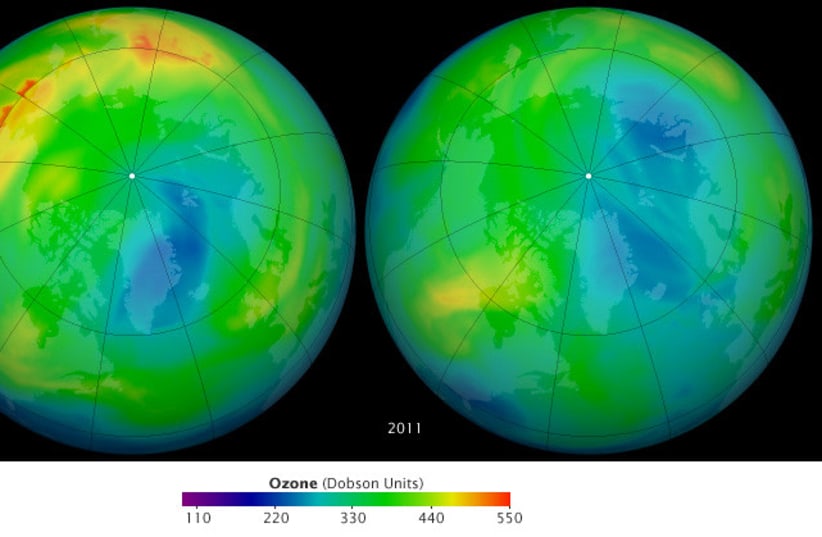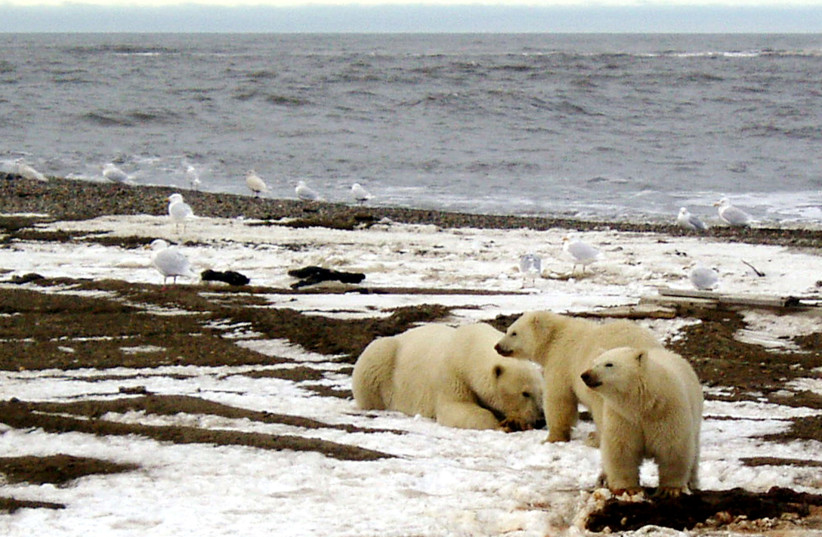The thinning of the ozone layer over the Arctic was one of the main causes behind weather anomalies in the northern hemisphere in 2011 and 2020, according to a new study published in peer-reviewed Nature Geoscience on Thursday.
When the ozone layer over the Arctic is depleted, the spring in central and northern Europe and Russia was exceptionally warm and dry, while in other areas, such as polar regions, wet conditions prevailed.
However, it was unclear if the ozone depletion was the cause of the weather anomalies or if other factors, such as the polar vortex in the stratosphere, were to blame.
Scientists from ETH Zurich, Princeton University and Zurich University of Applied Sciences (ZHAW) decided to try solving the uncertainty by running computer-simulated climate models to compare the situation between when there's ozone depletion and when there's no ozone depletion.
Simulating the depletion of the ozone
The simulations that took ozone depletion into account largely coincided with observational data from 2011 and 2020, as well as eight other similar events used for comparison purposes. However, when the scientists removed ozone depletion from the simulations, they could not reproduce the results that coincided with the years in question.
In the simulations which accounted for ozone depletion, the weather in Russia and Siberia was warmer and drier than in the simulations with did not account for ozone depletion.
“What surprised us most from a scientific point of view is that, even though the models we were using for the simulation are utterly different, they produced similar results,” said co-author Gabriel Chiodo, SNSF Ambizione Fellow at the Institute for Atmospheric and Climate Science, in a press release.
“What surprised us most from a scientific point of view is that, even though the models we were using for the simulation are utterly different, they produced similar results.”
Gabriel Chiodo, SNSF Ambizione Fellow at the Institute for Atmospheric and Climate Science
According to the researchers, the anomalies have their start in ozone depletion in the stratosphere. For ozone to be depleted there, temperatures in the Arctic need to be very low and the polar vortex in the stratosphere needs to be strong.
What is considered normal?
Usually, ozone absorbs UV radiation, warming the stratosphere and helping to break down the polar vortex in spring, but if there is less ozone, the stratosphere cools and the vortex becomes stronger.
When the polar vortex is strong, colder air is locked into the Polar regions, creating milder weather in the Northern Hemisphere. When the polar vortex weakens, it can cause dynamic weather as colder air can escape out of the polar regions into the US or Europe.
The new research could help climate researchers make more accurate seasonal weather and climate forecasts, allowing for better prediction of heat and temperature changes, according to the press release.
"It will be interesting to observe and model the future evolution of the ozone layer," said ETH Zurich doctoral student Marina Friedel.
The Environment and Climate Change portal is produced in cooperation with the Goldman Sonnenfeldt School of Sustainability and Climate Change at Ben-Gurion University of the Negev. The Jerusalem Post maintains all editorial decisions related to the content.

